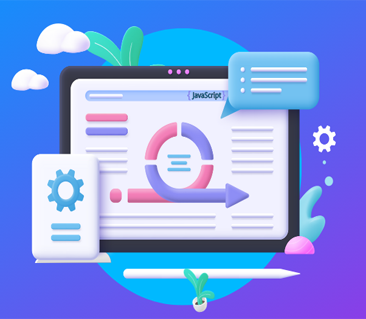Website Development & Marketing
Website management services refer to the activities and tasks involved in maintaining and updating a website. This includes tasks such as content updates, security checks, performance monitoring, search engine optimization (SEO), and ensuring the overall functionality and usability of the website. Website management services are typically offered by professionals or agencies who specialize in maintaining and improving websites for businesses or individuals.
Website development refers to the process of building and creating a website from scratch. This includes tasks such as designing the layout and visual elements, writing code to make the website function, integrating interactive features, and testing the site to ensure it works properly on different devices and browsers. Website development can range from simple static websites to complex dynamic websites with e-commerce functionality or custom web applications. It involves a combination of design, programming, and technical skills to bring a website to life. Website developers often use programming languages such as HTML, CSS, JavaScript, and PHP to build websites from the ground up.
An ASP.NET web application is a type of web application that is built using the ASP.NET framework, which is developed by Microsoft. ASP.NET allows developers to create dynamic websites and web applications by using server-side programming languages such as C# or VB.NET.
ASP.NET web applications are typically created using a model-view-controller (MVC) architecture, which helps to separate the user interface, business logic, and data access layers. This allows for a more organized and maintainable codebase.
ASP.NET provides a variety of tools and libraries to assist developers in building robust web applications, including built-in security features, data access controls, and web services integration. Additionally, ASP.NET allows for easy deployment and scaling of web applications.
Overall, ASP.NET web applications are powerful and versatile tools for creating interactive and functional web experiences.
Custom web design refers to the process of creating a website that is tailored specifically to meet the unique needs and goals of a business or individual. Unlike using pre-made templates or themes, custom web design involves working with a professional web designer or design team to create a website from scratch that is customized to reflect the brand, style, and functionality requirements of the client.
During the custom web design process, the designer will work closely with the client to understand their brand identity, target audience, and business objectives. They will create a unique visual concept for the website, including the layout, color scheme, typography, and imagery. The designer will also consider the user experience (UX) and user interface (UI) design to ensure the website is intuitive and easy to navigate.
Custom web design often involves creating custom graphics, animations, and interactive features to enhance the website’s visual appeal and functionality. The design is usually responsive, meaning it looks and functions well on different devices and screen sizes.
Overall, custom web design allows businesses and individuals to have a website that is one-of-a-kind, professional, and tailored to their specific needs and preferences.
eCommerce Website (Laravel Framework, ASP.net Framework, Web Framework)
Shopify, OpenCart, WordPress, WooCommerce, Customize Development
An e-commerce website is an online platform that allows businesses to sell products or services to customers over the internet. These websites are designed specifically for conducting online transactions and typically include features such as a shopping cart, secure payment gateways, product catalogs, and order management systems.
E-commerce websites can vary in size and complexity, from small boutique shops selling niche products to large online retailers with thousands of items. They can be built using various platforms and technologies, with some popular options including Shopify, WooCommerce, Magento, and custom-built solutions using programming languages like PHP or JavaScript.
Key features of an e-commerce website may include:
- Product Listings: Displaying products in a visually appealing way with detailed descriptions, images, and pricing information.
- Shopping Cart: Allowing customers to add products to a virtual cart for purchase.
- Payment Gateway: Integrating secure payment options for customers to complete transactions online using credit cards, digital wallets, or other payment methods.
- Order Management: Tracking and managing orders, processing payments, and updating inventory levels.
- Customer Accounts: Allowing customers to create accounts, save payment information, view order history, and track shipments.
- Search Functionality: Providing a search bar to help customers easily find products within the store.
- Responsive Design: Ensuring the website is optimized for mobile devices to provide a seamless shopping experience on smartphones and tablets.
Overall, an e-commerce website is essential for businesses looking to reach a wider audience, increase sales, and provide a convenient shopping experience for their customers.
Website maintenance refers to the regular activities and tasks that are necessary to keep a website running smoothly, up-to-date, and secure. It involves monitoring, updating, and managing various aspects of a website to ensure its optimal performance and functionality. Some common tasks involved in website maintenance include:
- Content Updates: Keeping the website content fresh, relevant, and up-to-date by adding new information, images, or blog posts.
- Software Updates: Installing and updating software components such as plugins, themes, and content management systems to ensure they are running the latest versions.
- Security Checks: Running security scans, monitoring for malware, applying security patches, and implementing security measures to protect against cyber threats.
- Backup and Recovery: Regularly backing up the website files and database to ensure that data can be restored in case of a technical issue or cyber attack.
- Performance Monitoring: Monitoring website performance metrics such as page loading speed, uptime, and user experience to identify and address any issues that may impact performance.
- SEO Maintenance: Optimizing website content, meta tags, and keywords to improve search engine visibility and rankings.
- Broken Link Check: Regularly checking for broken links and fixing any links that are not working to prevent a negative user experience.
- Mobile Responsiveness: Ensuring that the website is mobile-friendly and responsive on different devices and screen sizes.
- Usability Testing: Conducting usability tests to ensure that the website is user-friendly, easy to navigate, and provides a positive user experience.
Regular website maintenance is essential to ensure that a website remains secure, functional, and aligned with the latest industry standards and best practices. It helps to enhance user experience, improve search engine rankings, and protect against potential security threats or technical issues.







